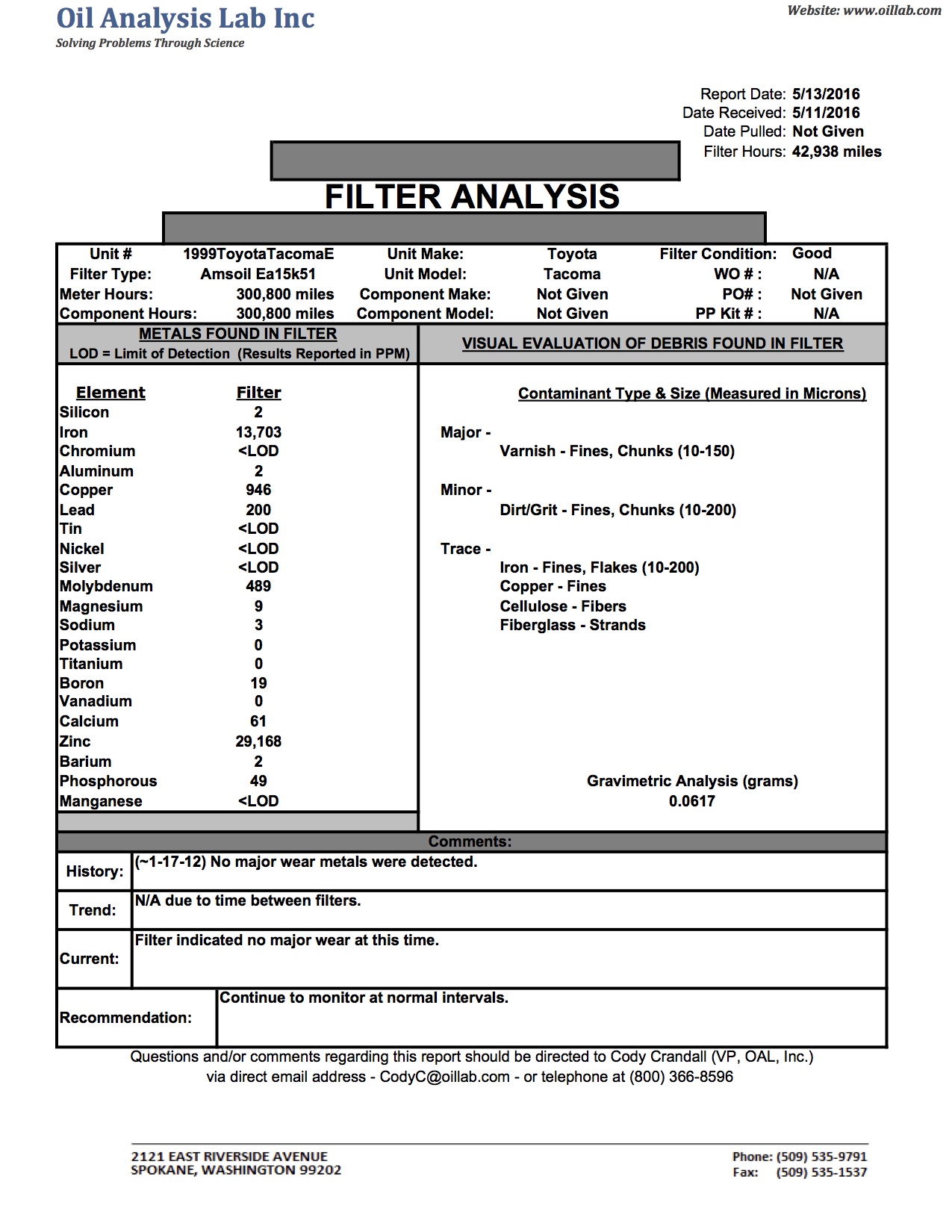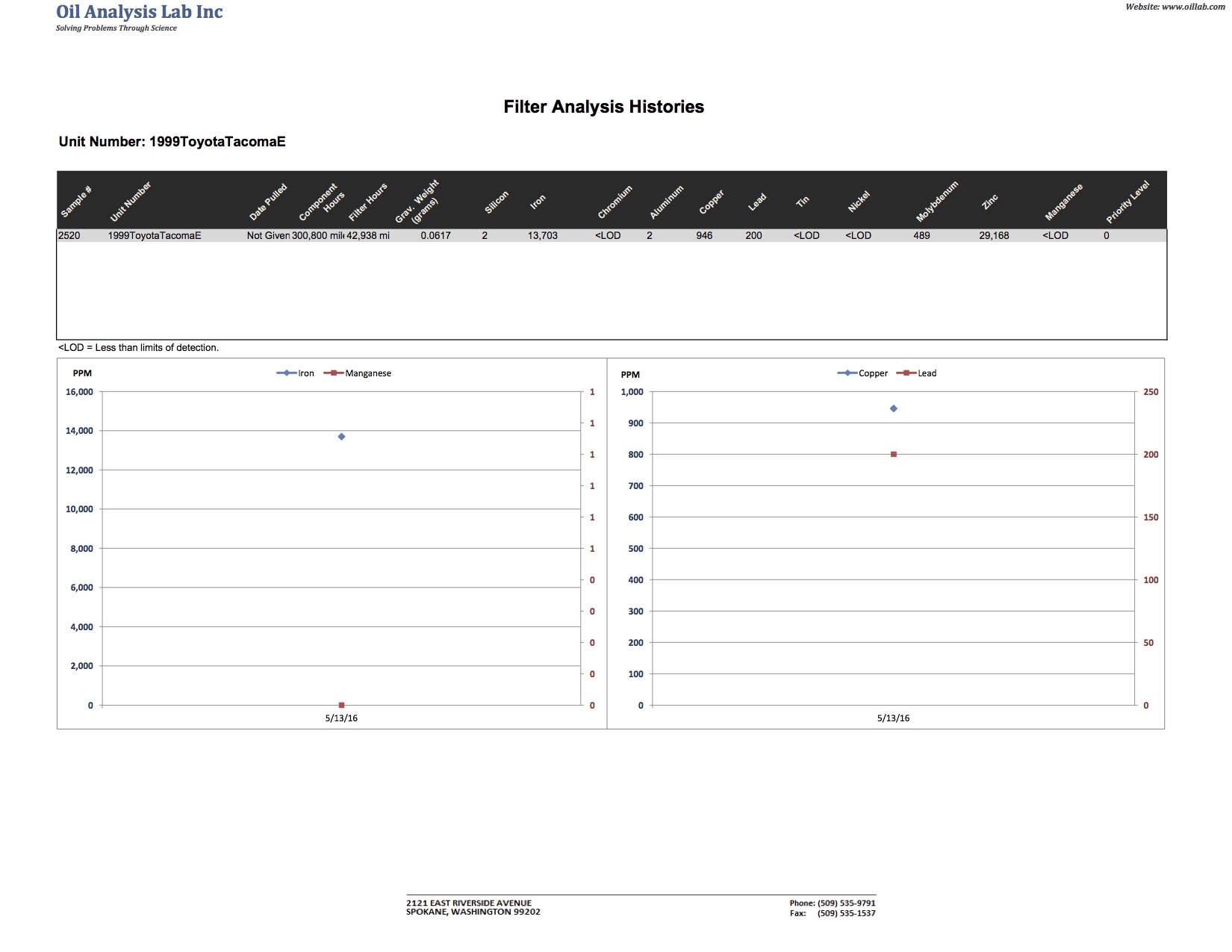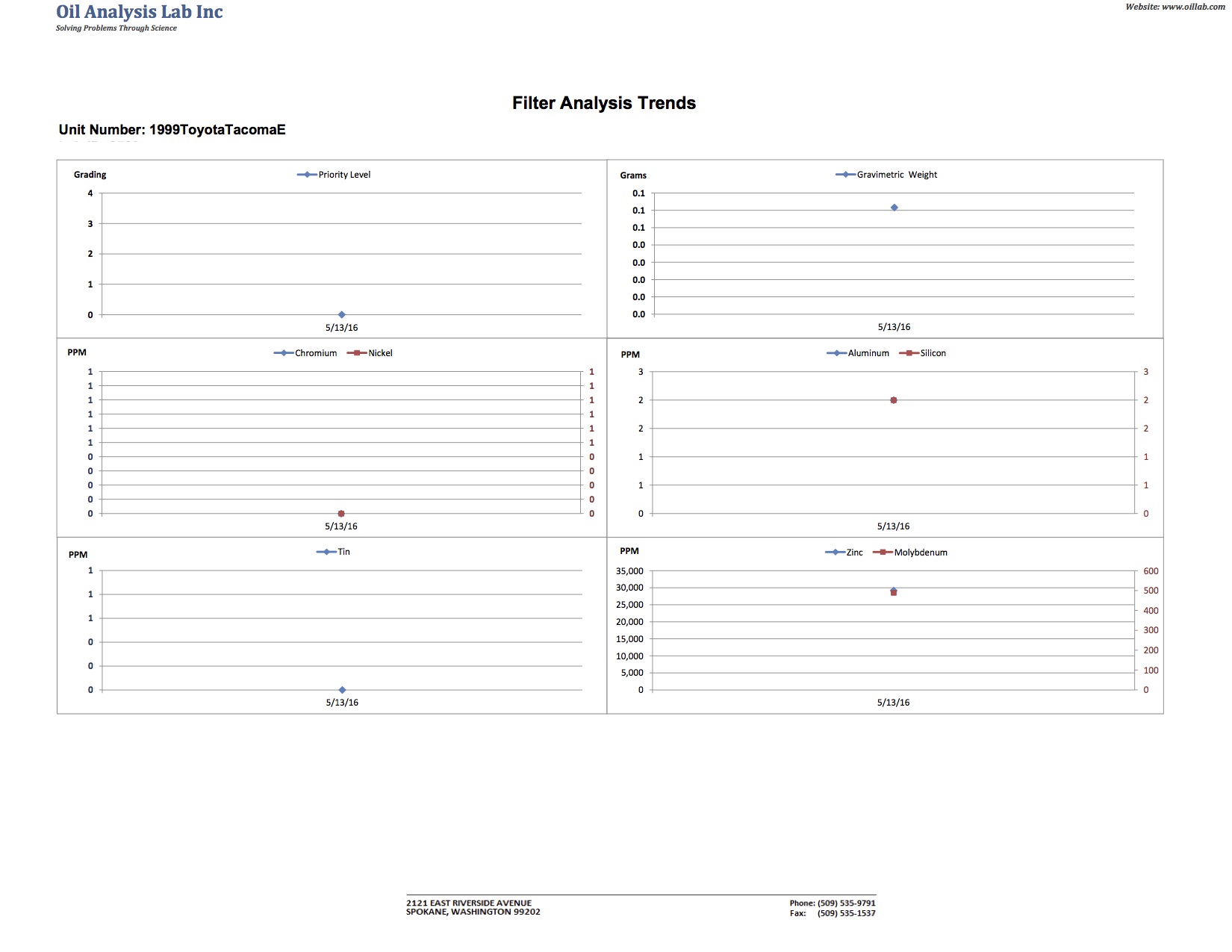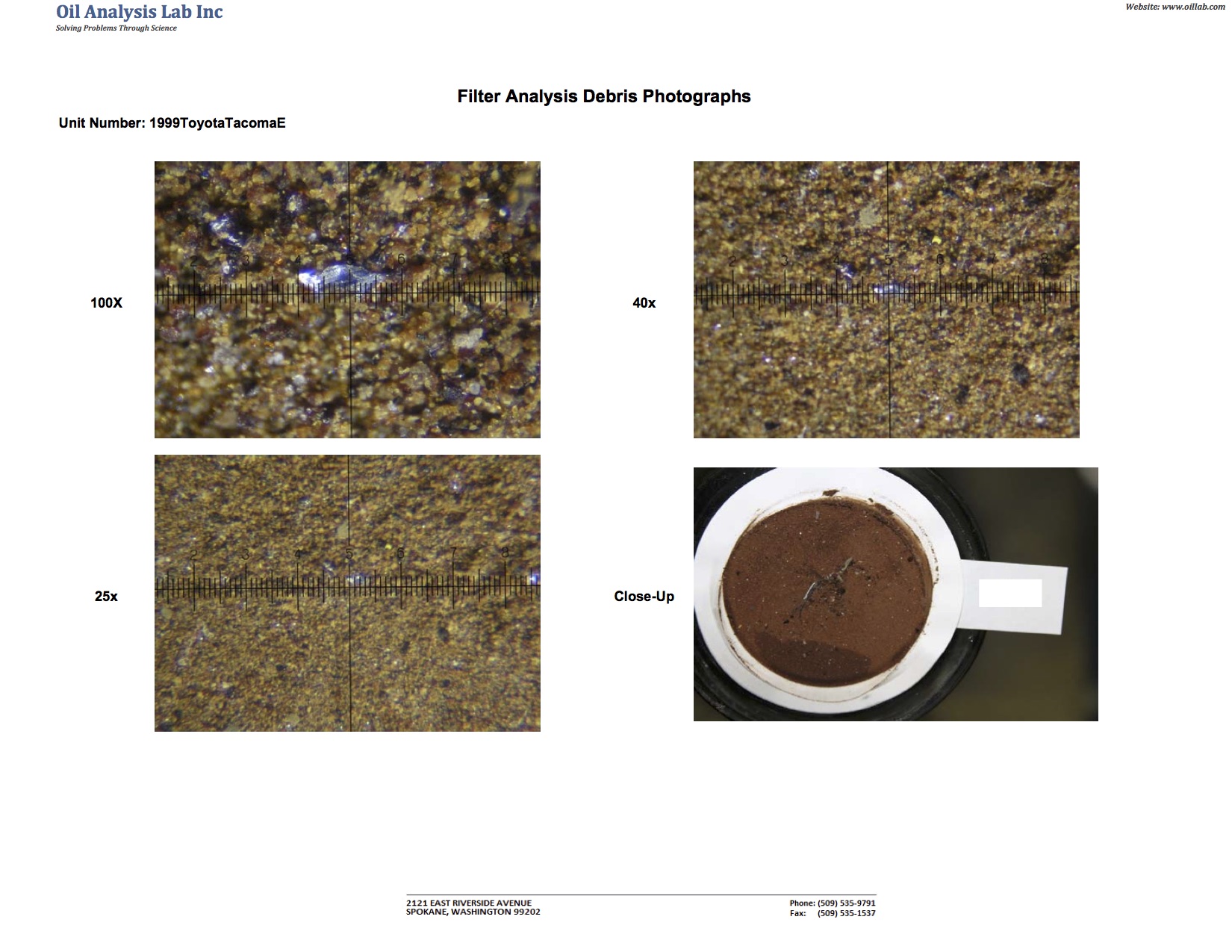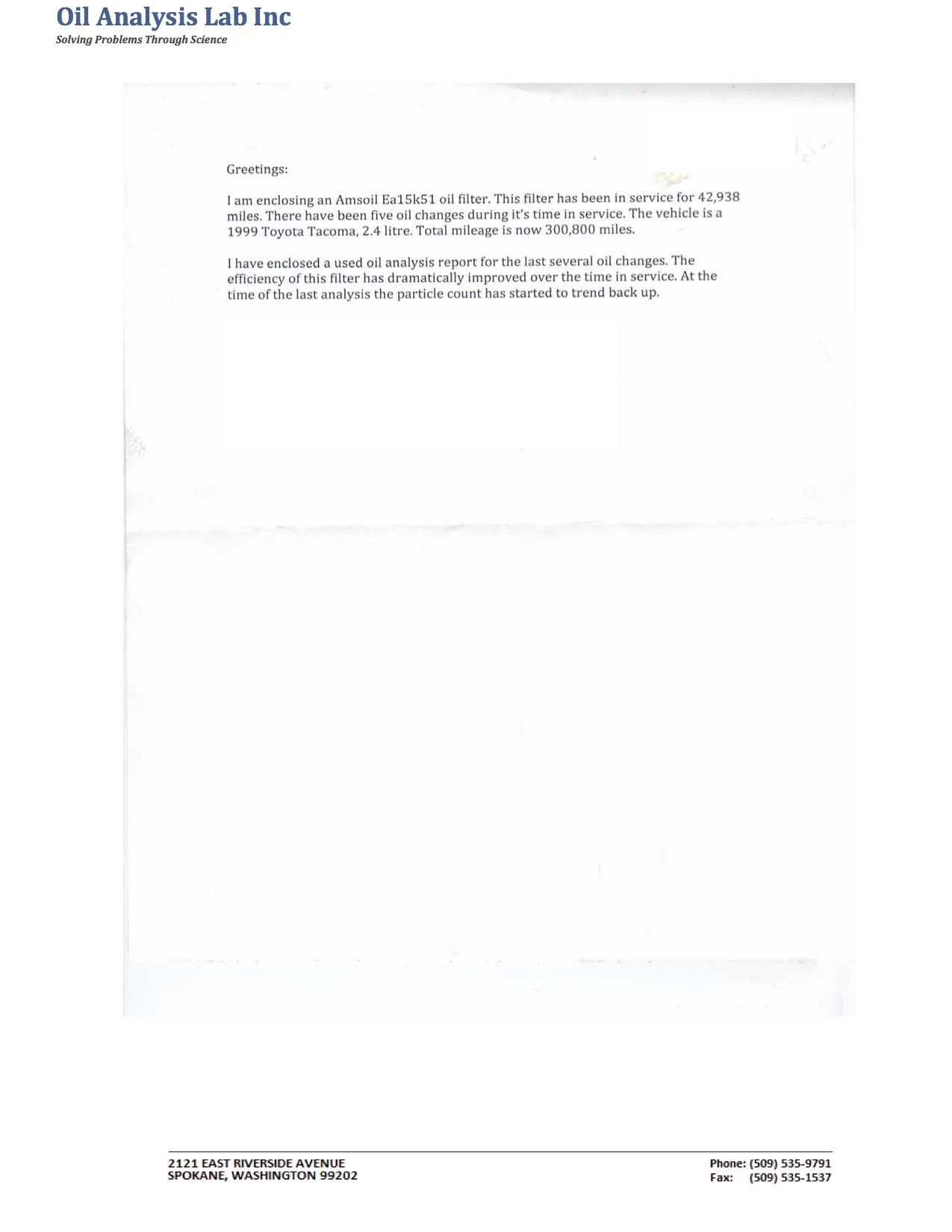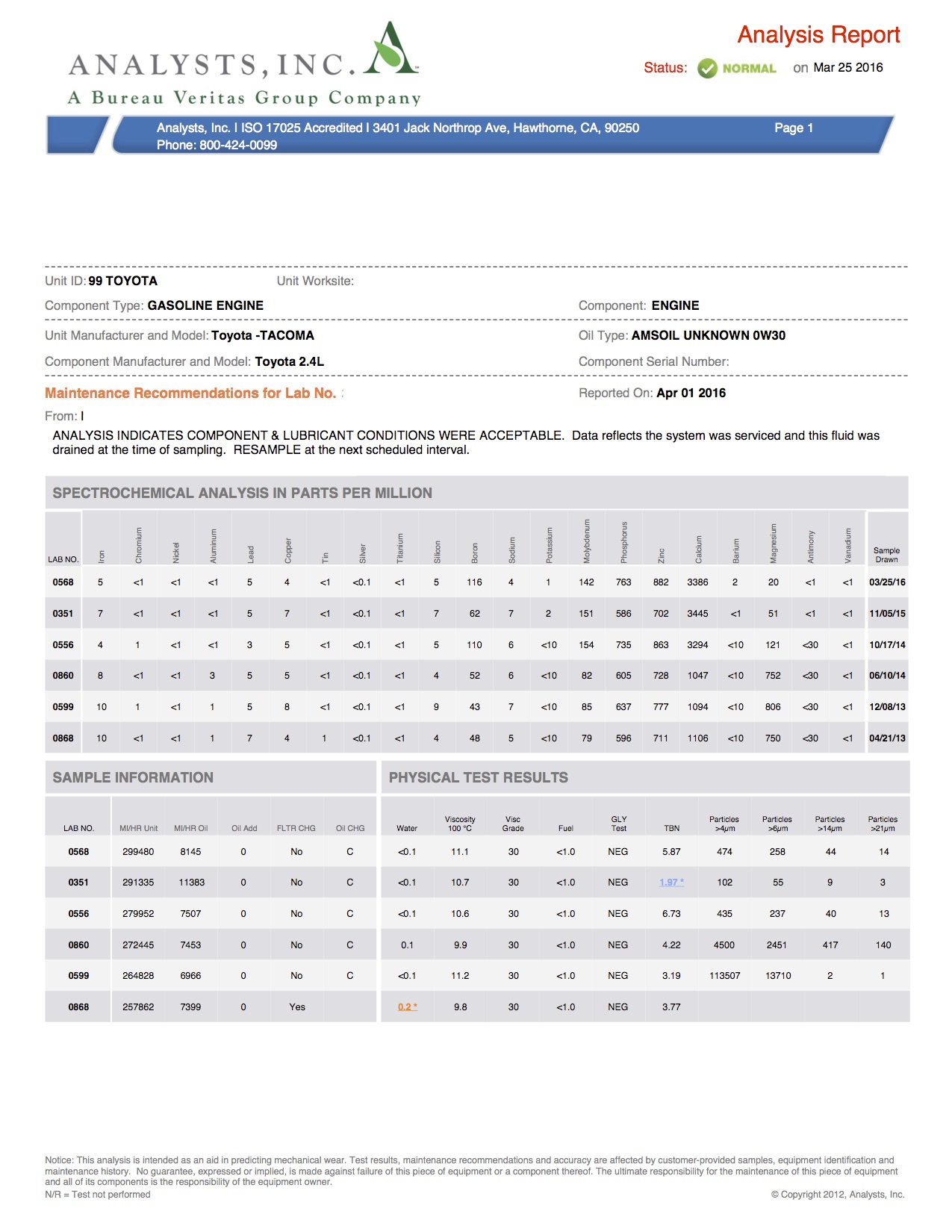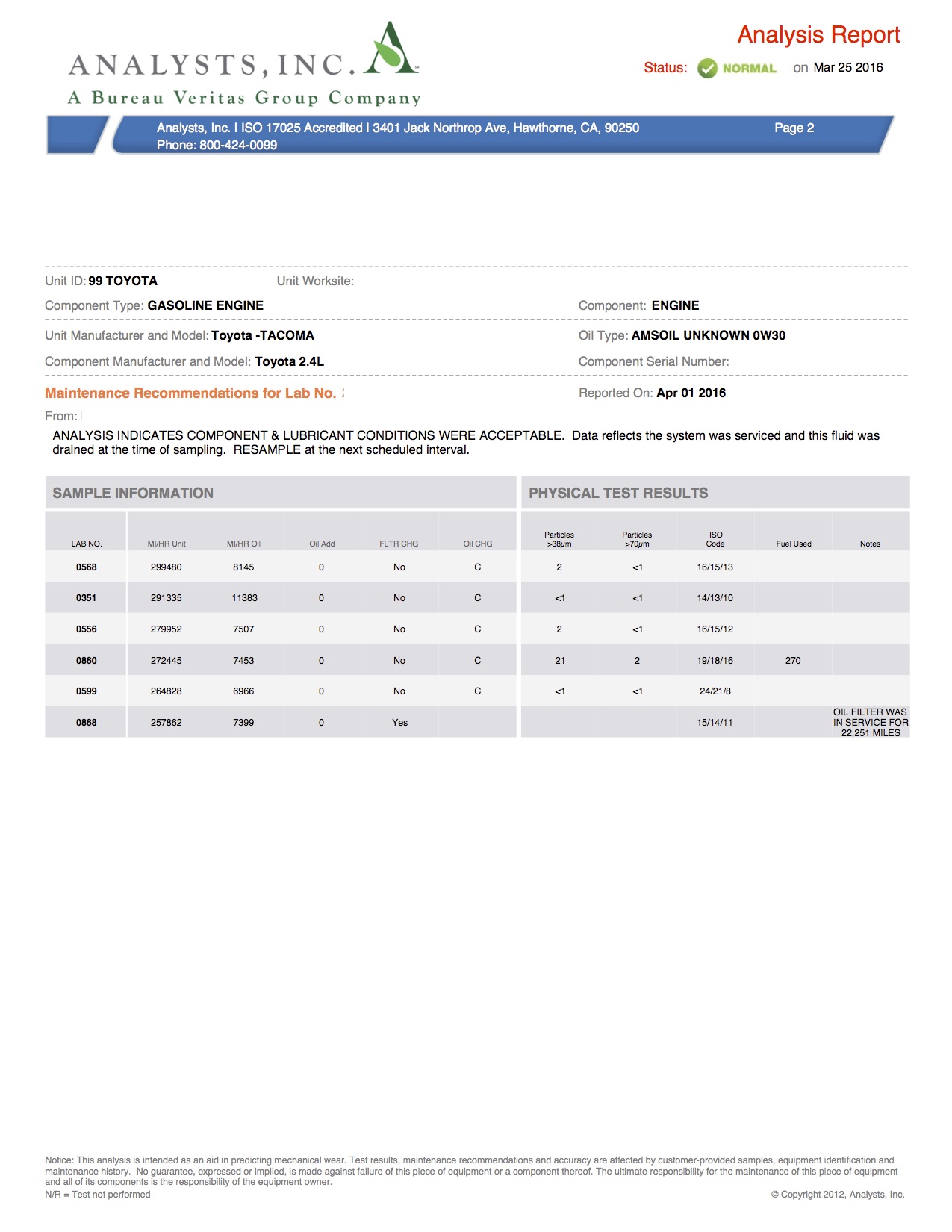Thanks for your response. I guess I really don't understand how a multi-pass filter can be evaluated except on the basis of the smallest particle it will capture. I mean no filter is 100% inefficient at levels above the lowest threshold, so depending on the number of passes the filter has seen prior to the analysis that will determine the particles that are observed in the particle analysis. Even inefficient filters will capture particles eventually, correct? Assuming the size isn't below the lower threshold (a threshold I assume may move during use).
As to your comment that it stops iron, how would you know that? When I was in college and performed AA analysis on our fluid power department's oil samples, we knew what the largest particle size was that would show up in our analysis. A similar upper bound for ICP exists, and from what I have read it is around the 4 micron range unless an acid digestion is performed on the sample. Here is an article from Machinery Lubrication which mentions the limit:
http://www.machinerylubrication.com/Read/29657/wear-particle-analysis
Based on that I can't see how you would arrive at any correlation between iron and a particle count. Unless you know the particles observed in the particle analysis are indeed iron, and you know they are smaller than 4 microns, then that iron will not show up in the elemental analysis.
Originally Posted By: DrDave
Greetings:
I've read your responses a couple of times trying to understand your points. I think you are making a couple of leaps in logic. I believe we have to look at both the filter analysis report and the UOA report. The information I glean from the data is that the filter becomes more efficient with time in service. This was actually my initial question to be answered by the data. I have been cautious to not introduce additional variables into the equation. I have not changed the air filter or even disturbed the housing. I have used the same oil for the last four changes. From lab #556 forward I have used the same oil. Pre #556 was M1 and post #556 is Amsoil 0w-30 Signature. The filter analysis report shows that it is capturing iron, apparently quite efficiently.
I don't believe we have the methodology to comment on wear rate or definitive source. We could identify the type of wear from the filter patch photographs if abnormal wear were occurring.
The purpose of this exercise was to explore the limits of filter efficiency vs. time in service. I believe that has been accomplished based on clear objective data. What I can say about this application, and quite possibly many others, is that changing the filter at each oil change is not necessary and may be counterproductive. During the first run the filter acts more like a screen than a filter. In this application it became a filter around 15k miles. I believe the voluminous talk and consideration people give to finding the most efficient filter is misdirected. I would hypothesize that the most efficient filter is the one already on your engine. If left to do it's job it becomes more efficient every pass. A filter lab tech told me years ago that people throw away their oil filters just when they are starting to get efficient.
The UOA report does not consider particle size in the spectrochemical analysis. I do not have the data to directly show that the wear metals on the report are
As always comments are welcome as well as objective hypothesis and critical thinking.
Happy motoring.
Dave
